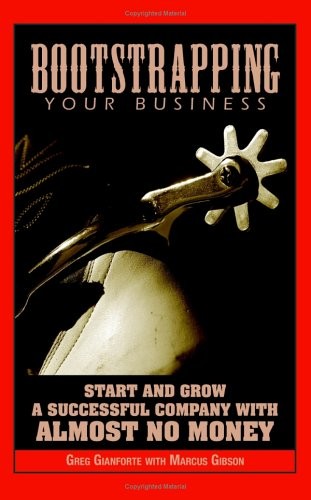The 7 Essentials of HighGrowth Companies
Post on: 24 Август, 2015 No Comment

Are you leveraging the success pattern of America’s most successful growth companies?
During tough times, the tough get growing.
That’s an inspiring expression my father, now 86, shared with me when I was a Mr. Fix-it general manager trying to turn business units around and feeling as it was an impossible task. The tough get growing is a management attitude I am seeing displayed by an increasing number of today’s successful executives: reaching for the inner strength to grow during the most challenging of times.
This tough economic period is the growth-opportunity window to separate your company from competitors. If your company can achieve growth through these particularly challenging economic times, it will emerge as a one of the leaders for the next growth cycle. This is an unshakable fact that I have learned from studying the success pattern of over 400 of America’s highest-growth companies.
These companies embody what I call the 7 Essentials of particularly good management, invoking growth practices not commonly used by low-growth or struggling companies. More important, they implement these practices with much more determination and clarity and success than other companies. In addition, they implement not just one or two Essentials, but at least five and sometimes all seven of them.
Parallel Work Streams
Where did these 7 Essentials come from? The answer to this question involved three parallel work streams:
Identifying the financial pattern of high-growth companies involving a multiyear study of revenue, financial and shareholder return metrics across up and down economic cycles
Indentifying The 7 Essentials by poring over thousands of corporate histories and articles across multiple economic sectors, setting up a template to identify what high-growth or blueprint companies had in common and;
Defining The 7 Essentials by leveraging the expertise of a highly talented team of executives, investors, and management consultants combined with over 75 CEO interviews.
Getting 5 of 7 Right
The outcome of this extensive research, which is ongoing, are the insights and actions that America’s highest-growth companies have uniquely applied to grow through multiple up and down market cycles over the past 20 years. America’s growth companies represent an elite set of 5% of publicly traded companies, which I have labeled the blueprint companies, that uniquely achieve compounding revenue growth.
You may be asking What’s new here, especially since pretty much every company focuses on a market, has customers, tries to be profitable, and has a management team—in other words, tries to achieve growth. Fair question. The difference between a struggling company and one that shows exceptional growth is the unique combination of what it does and how it does it. That’s what makes up its unique blueprint. And that difference is quantifiable and expressed in the consistent performance of top-line growth as measured by revenue growth, and bottom-line growth as measured by earnings before interest income and depreciation, return on investment, and free cash flow.
While every management team multitasks and at least tries to be highly skilled, I found that the masters of high-growth companies in fact utilize five or more of these seven essentials. This reinforced precisely what Dr. Stephen Covey identified in his research that resulted in the book, The 7 Habits of Highly Effective People. that the most effective people exhibited most or all of the seven habits. So too, when I compared companies that were founded in the same year—for example, Juniper Networks (JNPR) vs. Avici, Siebel Systems vs. Onyx—the company that achieved exceptional growth utilized almost all of these 7 essentials! In contrast, the company that struggled performed only a few of the essentials with above average performance.
Mastering The 7 Essentials
Here is an overview of the 7 Essentials, along with questions that will be addressed in the next seven weekly columns:
Essential No. 1: Create breakthrough value propositions.
Focus on delivering higher-order benefits or exceptional value as perceived by customers. Particularly during changing economic cycles, consider having a management off site to creatively and candidly address these questions:
With customers redefining their needs and desired benefits for the challenging times ahead, how can your service or product become the #1 most desired in your industry or market category?
What advantages have you identified by listening to your best customers and those of your competitors?
What actions could you take to create an improved or new exceptional value differentiator for your company?
Essential No. 2: Exploit a high-growth market segment.
While the overall economy may now be heading toward slow growth, you need to search for the high-growth market segments within your industry or economic sector. Start by answering the following questions:
While many large markets can be stagnant, how innovatively are you redefining or identifying market segments that present growth opportunities?
What insights can you learn from new customers that will enable you to identify which products or services are required to deliver exceptional value to address unmet needs?
If you can redefine the value zone between your most important customers and your company, can you then create an explosive market opportunity? How will you specifically break down this huge aspiration?
Essential No. 3: Recruit marquee customers to fuel exponential revenue growth.
Such customers don’t just buy—they are an extension of your sales force (and, really, your advertising and PR) as they pro-actively spread the word about their positive experience with your company. The remarkable value added by Marquee Customers can be realized by reflecting on the following questions:
While all companies have customers, how well are you developing your best customers to become marquee customers? Do you fully understand what determines a customer becoming marquee to your company?
To accelerate new products and services to fuel growth, how are you refining new innovations through the lens of your marquee customers?
How are you leveraging your best customers to not only buy from your company but sell to other prospective customers, reduce your sales cycle in half, and significantly reduce your costs for sales and marketing? And what are you doing, in return, to repay their good gestures?
Essential No. 4. Leverage big brother alliances to break into new markets.
Big companies cannot invent every product or service they need to grow, and small companies need alliances with bigger companies in order to break into new markets. A unique alliance pairing—I call them Big Brother and Little Brother Alliances—pairs a large corporation with a smaller innovative firm. While leveraging alliances is a difficult essential to execute, answering these questions will get you thinking in the right direction:
While alliances can be tricky to execute due to the asymmetric size between Big and Little Brother partners, how well are you leveraging supply and channel alliances to break into new markets?
How well are you identifying, forming, and building truly trust-based alliances to ensure a long-term win-win relationship?
If you are struggling to find the right partner, are there opportunities to leverage marquee customer relationships to serve as a matchmaker?
Essential No. 5. Become the master of exceptional returns.

The best-run high-growth companies are cash-flow positive early and generate more cash as they grow. They generate a high return on capital invested and often have no or little long-term debt as they fuel growth from profits.
Here are three questions on the crucially important issue of achieving profitability balancing the ability to reinvest in order to grow:
If your business is saddled with disproportionate long-term debt and low profitability, are you urgently focusing on a turnaround?
Which management approach best represents how you are achieving profitability from gross margin earned: over invest, cut costs, or balance profitability with reinvesting to grow?
How well is your decision-making process working that balances profitability with reinvesting to grow?
Essential No. 6: Apply inside-outside leadership to the entire management team.
One of the pivotal essentials that enables the other essentials to be simultaneously executed is a dynamic leadership pairing in which one leader (or team) faces outward toward markets, customers, alliances, and the community, while the other leader (or team) focuses inward to optimize operations.
Here are three questions to reflect on, engage with your team or discuss with your (potential) other half:
Whether you are running a company or in middle management, are you paired up with a counterpart who complements your talents? If you don’t think so, have your considered clarifying your roles with a trusted partner? Alternatively, are you competing with peers for survival or the next promotion can you have a team meeting to discuss values and culture?
If you are a Jack of All Trades working operational and customer facing initiatives, can you achieve higher performance by focusing much more on either inside or outside initiatives, and then forming a partnership with a trusted counterpart to do the other half of the equation?
How well are your company’s structure, management objectives, and incentives leveraging inside-outside management pairs? For example, do you think sharing the same objectives and incentives across inside and outside pairs is a productive approach?
Essential No. 7. Stack your board of directors with essentials experts.
Boards dominated with investors and management tend to be associated with companies that struggle in the long term. Balance your board with customers, alliance partners and, a CEO who has led a growth company through up and down economic cycles.
Ask yourself and your top management:
How well are you finding, and then incorporating strategy advice, from customers, alliance partners, and C level executives (for example, a CEO) who have led growth businesses larger than yours?
If your board of directors (either formally or virtually) is currently dominated with investors and management team members, what are you doing to better educate them on growth principles?
Especially during downturns, is your board being renewed with new members who bring fresh experiences, perspectives and contacts?
scorecard.bluprintgrowth.com to access this confidential and free scorecard tool.
The next columns will focus on one essential at a time; answering these questions by highlighting real-world growth lessons from growth-company CEOs along with actionable insights that you can apply to your situation.














